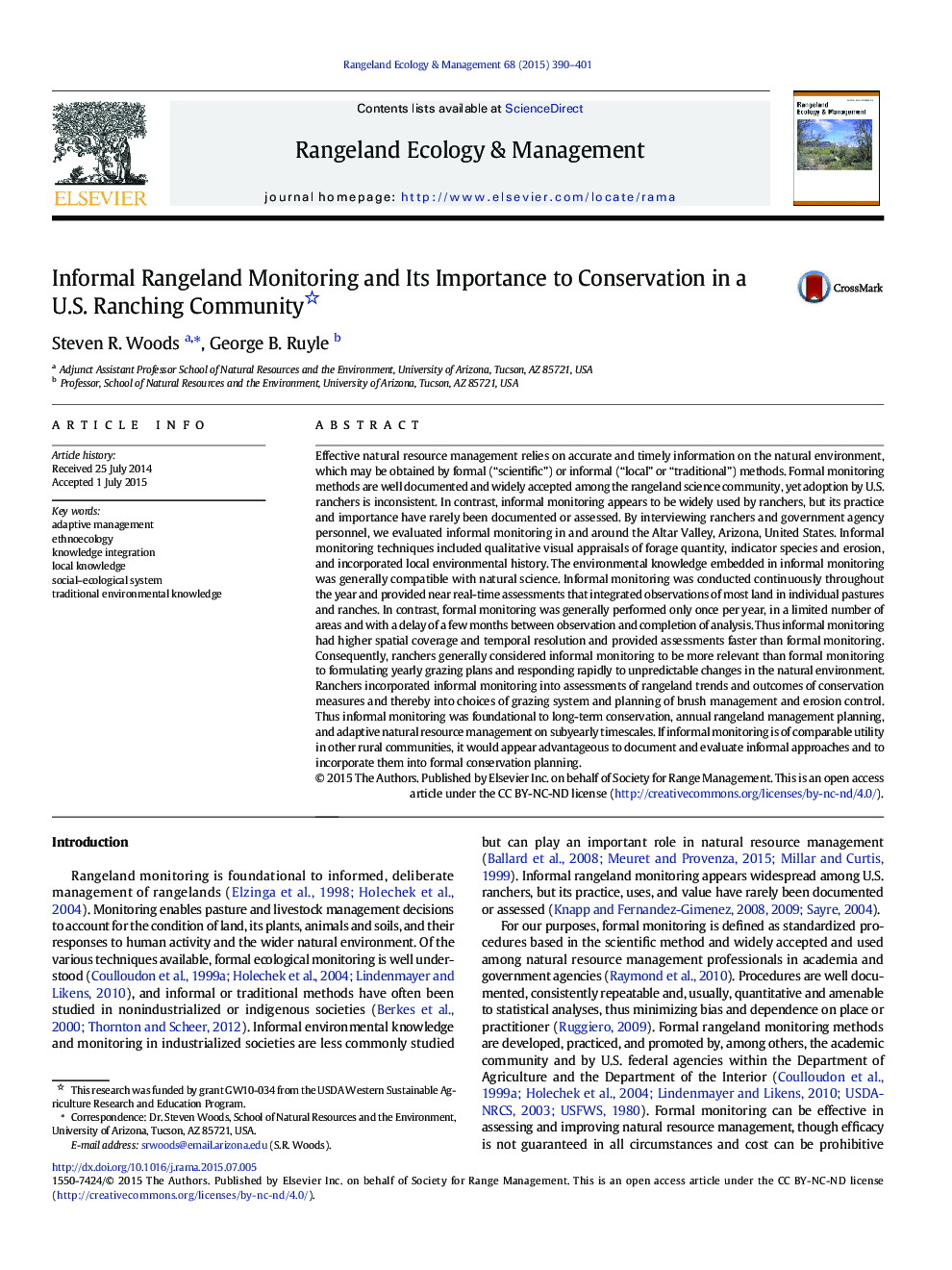| کد مقاله | کد نشریه | سال انتشار | مقاله انگلیسی | نسخه تمام متن |
|---|---|---|---|---|
| 6305744 | 1307146 | 2015 | 12 صفحه PDF | دانلود رایگان |
عنوان انگلیسی مقاله ISI
Informal Rangeland Monitoring and Its Importance to Conservation in a U.S. Ranching Community
ترجمه فارسی عنوان
نظارت بر مرتع غیر رسمی و اهمیت آن در حفاظت از محیط زیست در ایالات متحده آمریکا
دانلود مقاله + سفارش ترجمه
دانلود مقاله ISI انگلیسی
رایگان برای ایرانیان
کلمات کلیدی
مدیریت تطبیقی، قوم شناسی، ادغام دانش، دانش محلی، سیستم اجتماعی اجتماعی | دانش زیست محیطی سنتی،
موضوعات مرتبط
علوم زیستی و بیوفناوری
علوم کشاورزی و بیولوژیک
علوم کشاورزی و بیولوژیک (عمومی)
چکیده انگلیسی
Effective natural resource management relies on accurate and timely information on the natural environment, which may be obtained by formal (“scientific”) or informal (“local” or “traditional”) methods. Formal monitoring methods are well documented and widely accepted among the rangeland science community, yet adoption by U.S. ranchers is inconsistent. In contrast, informal monitoring appears to be widely used by ranchers, but its practice and importance have rarely been documented or assessed. By interviewing ranchers and government agency personnel, we evaluated informal monitoring in and around the Altar Valley, Arizona, United States. Informal monitoring techniques included qualitative visual appraisals of forage quantity, indicator species and erosion, and incorporated local environmental history. The environmental knowledge embedded in informal monitoring was generally compatible with natural science. Informal monitoring was conducted continuously throughout the year and provided near real-time assessments that integrated observations of most land in individual pastures and ranches. In contrast, formal monitoring was generally performed only once per year, in a limited number of areas and with a delay of a few months between observation and completion of analysis. Thus informal monitoring had higher spatial coverage and temporal resolution and provided assessments faster than formal monitoring. Consequently, ranchers generally considered informal monitoring to be more relevant than formal monitoring to formulating yearly grazing plans and responding rapidly to unpredictable changes in the natural environment. Ranchers incorporated informal monitoring into assessments of rangeland trends and outcomes of conservation measures and thereby into choices of grazing system and planning of brush management and erosion control. Thus informal monitoring was foundational to long-term conservation, annual rangeland management planning, and adaptive natural resource management on subyearly timescales. If informal monitoring is of comparable utility in other rural communities, it would appear advantageous to document and evaluate informal approaches and to incorporate them into formal conservation planning.
ناشر
Database: Elsevier - ScienceDirect (ساینس دایرکت)
Journal: Rangeland Ecology & Management - Volume 68, Issue 5, September 2015, Pages 390-401
Journal: Rangeland Ecology & Management - Volume 68, Issue 5, September 2015, Pages 390-401
نویسندگان
Steven R. Woods, George B. Ruyle,
